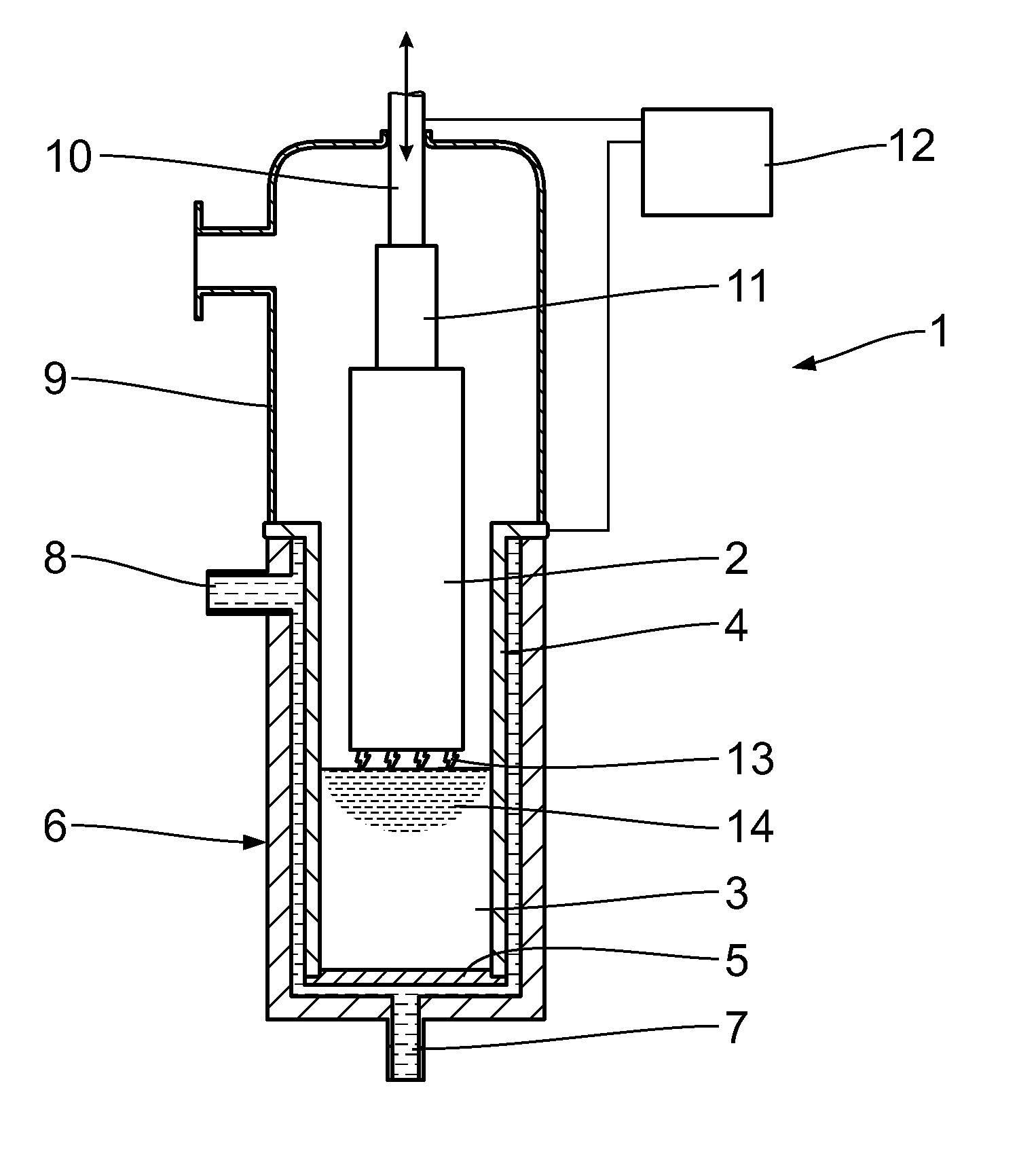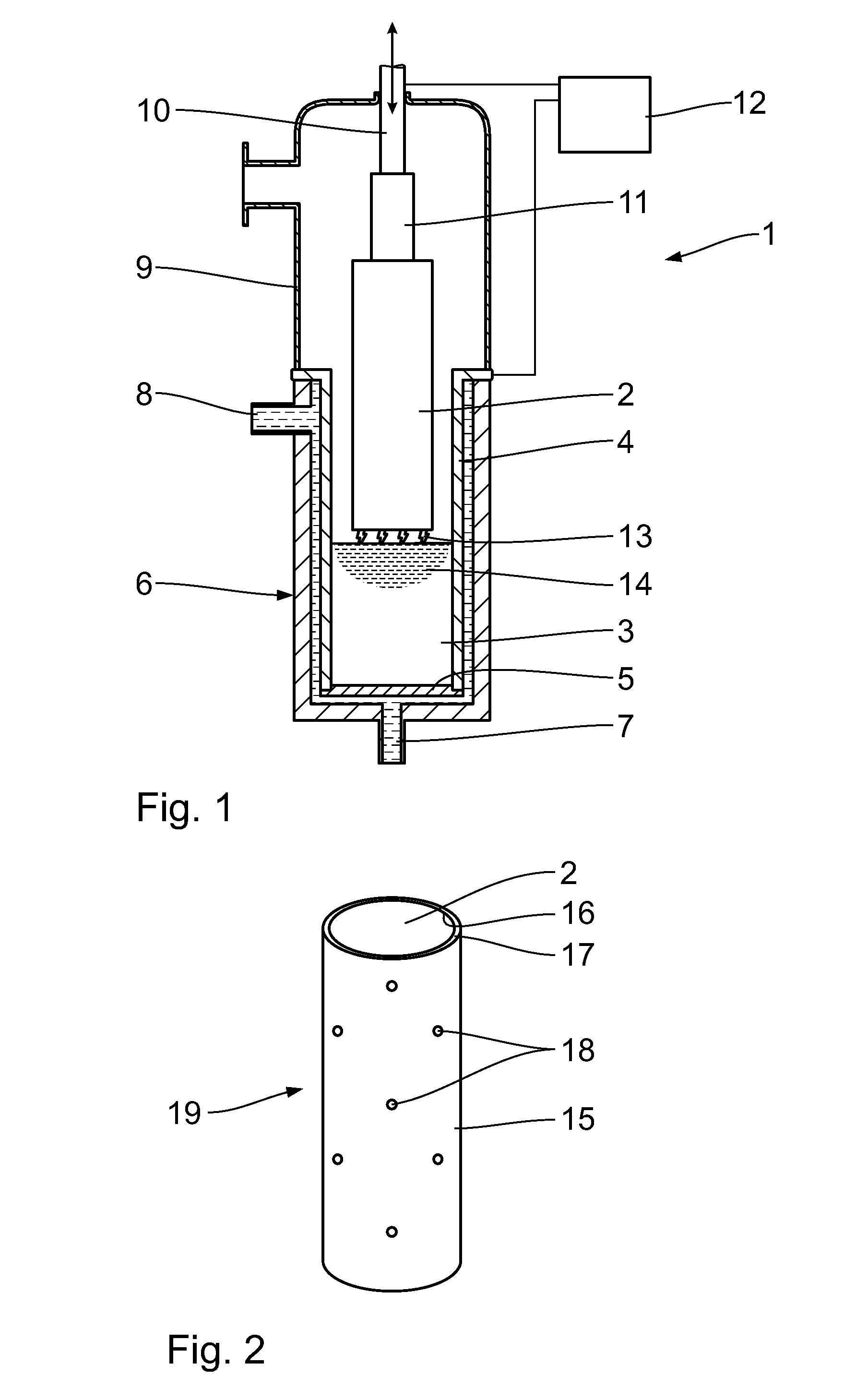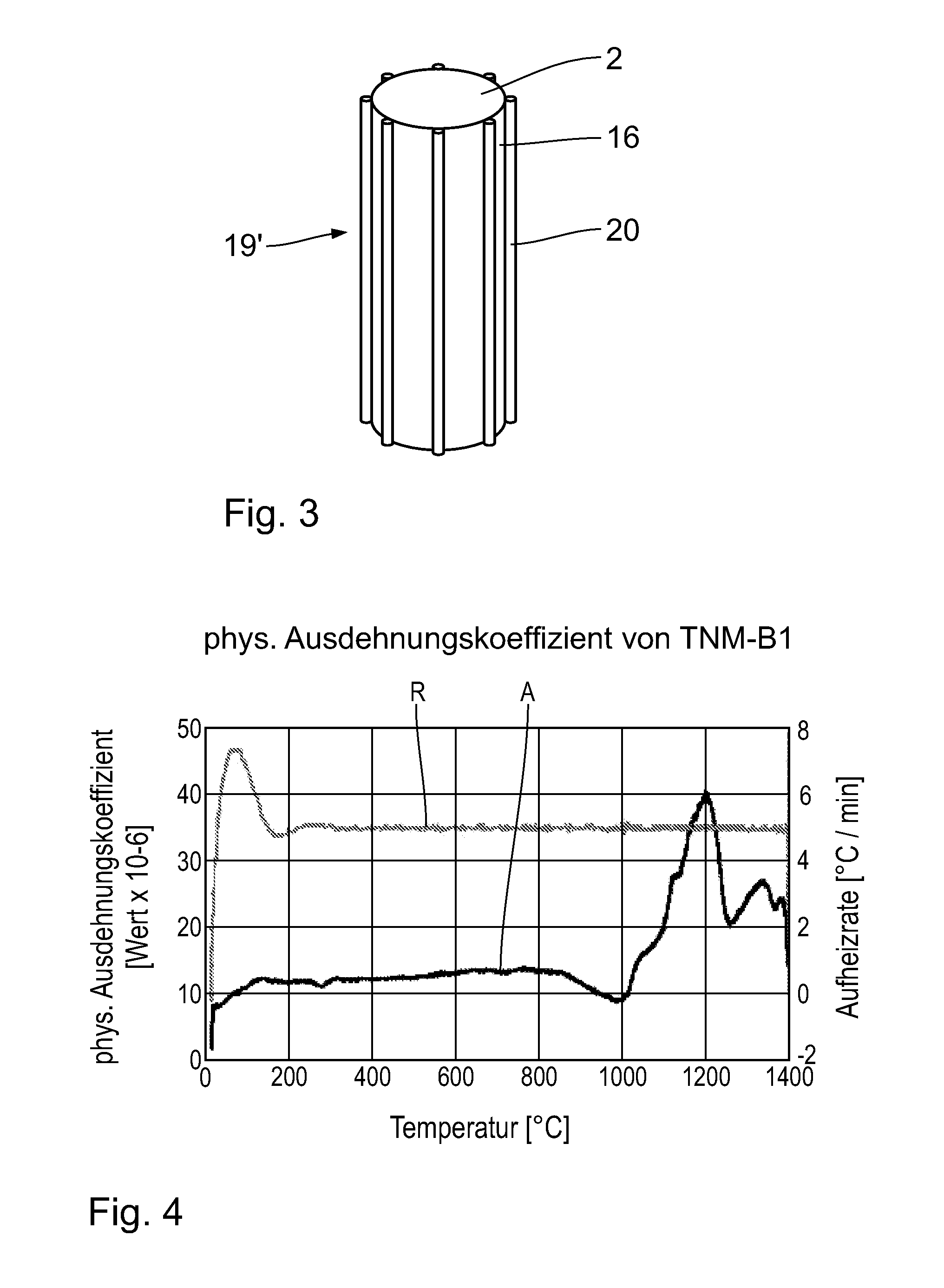METHOD FOR THE PRODUCTION OF A Ãβ-y-TiAL BASE ALLOY
a technology of tial base alloy and tial alloy, which is applied in the direction of furnaces, electric furnaces, furnace types, etc., can solve the problems of ingot material no longer suitable for use, remelting in the var furnace in a technically reproducible manner, and the component of the consumable alloy electrode to chip off the electrode, so as to prevent the problem of crack formation and ensure the production of such a final alloy.
- Summary
- Abstract
- Description
- Claims
- Application Information
AI Technical Summary
Benefits of technology
Problems solved by technology
Method used
Image
Examples
example 1
[0038]The final composition of the β-γ-TiAl base alloy is Ti-43.5Al-4.0Nb-1.0Mo-0.1B (at. %) or Ti—Al28.6-Nb9.1-Mo2.3-B0.03 (m. %). The composition of the primary alloy for the basic melting electrode is determined by reducing the titanium content to Ti-45.93Al-4.22Nb-1.06Mo-0.11B (at. %). In a first step, an ingot 3 of the primary alloy having a diameter of 200 mm and a length of 1.4 m is produced in a conventional process as described above from a compacted electrode 2 by double VAR melting without causing cracks to form. Materials used in the production of the compacted electrode 2 are sponge titanium, pure aluminum and master alloys.
[0039]In order to increase the reduced titanium content in the basic melting electrode to the desired amount of the β-γ-TiAl base alloy in the final alloy, the entire outer peripheral surface of the ingot 3 from the primary alloy is wrapped into a pure titanium sheet 15 having a thickness of 3 mm (mass 12 kg) which is partially welded to the outer pe...
example 2
[0040]The final composition, the used materials and the composition of the primary alloy correspond to those of example 1. By simple VAR melting of compacted electrodes 2, the primary alloy is transformed into an ingot 3 having a diameter of 140 mm and a length of 1.8 m.
[0041]The mass of the ingot amounts to 115 kg. Prior to the final melting process of the basic melting electrode 2, the die of the VAR furnace 1, which is formed by the copper crucible 4, is lined on its inner peripheral surface with a sheet of pure titanium having the following dimensions: periphery 628 mm×height 880 mm×thickness 3 mm (mass 7.6). In other words, the final composition is obtained by combining the composition of primary alloy ingot forming the basic melting electrode 2 with that of the titanium sheet. The basic melting electrode 2 is remolten in the copper crucible 4 lined with the titanium sheet to form an intermediate electrode in such a way that the outer skin of the titanium sheet is not completel...
example 3
[0042]The final composition, the materials used as well as the composition of the primary alloy and the production of the composite electrode 19 correspond to example 1. In contrast to example 1, the final remelting step of the composite electrode 19 takes place in a so-called ‘VAR skull melter’, in other words a vacuum arc melting device comprising a water-cooled, tiltable melting crucible of copper. The molten material of the final alloy in the ‘skull’ is cast into permanent dies of stainless steel which are arranged on a rotating casting wheel. The cast bodies thus produced by centrifugal casting are used as primary material for the production of components from the final alloy.
PUM
| Property | Measurement | Unit |
|---|---|---|
| Length | aaaaa | aaaaa |
| Thickness | aaaaa | aaaaa |
| Content | aaaaa | aaaaa |
Abstract
Description
Claims
Application Information
 Login to View More
Login to View More - R&D Engineer
- R&D Manager
- IP Professional
- Industry Leading Data Capabilities
- Powerful AI technology
- Patent DNA Extraction
Browse by: Latest US Patents, China's latest patents, Technical Efficacy Thesaurus, Application Domain, Technology Topic, Popular Technical Reports.
© 2024 PatSnap. All rights reserved.Legal|Privacy policy|Modern Slavery Act Transparency Statement|Sitemap|About US| Contact US: help@patsnap.com










